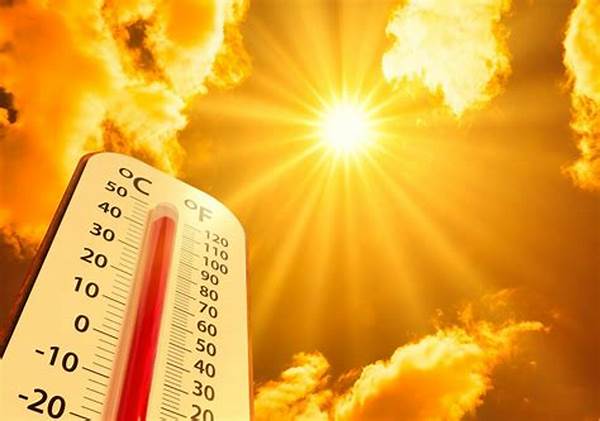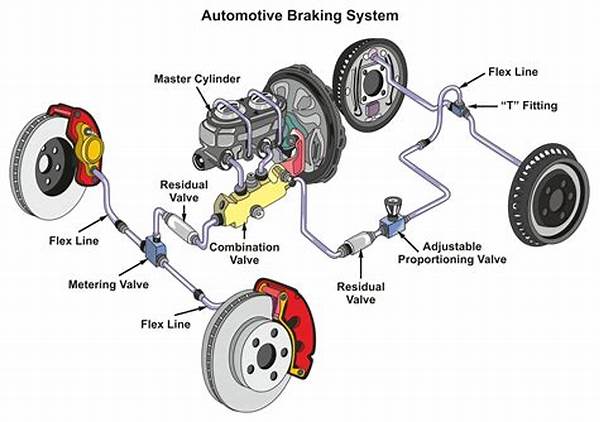Impact Of Extreme Temperatures
Extreme temperatures, characterized by significant deviations from standard weather patterns, are increasingly becoming a topic of concern among environmental scientists and policymakers. These unusual temperature variations pose substantial challenges not only to ecological systems but also to human societies. Understanding the impact of extreme temperatures is vital for formulating effective strategies to mitigate their adverse effects on communities and the environment.
Read Now : Audio System Controls Maserati Quattroporte
The Influence on Ecosystems and Human Health
The impact of extreme temperatures is far-reaching, influencing everything from ecosystems to human health. Ecosystems are sensitive to temperature changes, and extreme heat or cold can disrupt the delicate balance, leading to loss of biodiversity. For instance, prolonged periods of high temperatures can cause droughts, affecting water availability and forcing wildlife to migrate or perish.
On human health, extreme temperatures can exacerbate existing health conditions. Heatwaves have been associated with an increase in heat-related illnesses and deaths. Conversely, extreme cold can lead to hypothermia and other cold-related health issues. The impact of extreme temperatures underscores the importance of adaptation strategies, such as improving infrastructure to better cope with these variations. To put it simply, if we don’t get a handle on this, we might be in for more than just a hot mess.
Economic Consequences of Temperature Extremes
1. Extreme temperatures can mess with the economy big time, causing damage to infrastructure like roads and bridges.
2. Agricultural production takes a hit when extreme heat or cold wrecks crops, leading to losses in food supply.
3. Energy demand spikes during temperature extremes, straining grids and causing blackouts.
4. Health care costs skyrocket as the demand for medical services increases due to heat-related illnesses.
5. The tourism industry can take a nosedive if extreme temperatures make destinations less appealing.
The impact of extreme temperatures can lead to extra costs all around, leaving businesses and governments scrambling for cash.
Urban Challenges and Adaptation Strategies
Cities, being the hubs of human activity, face distinctive challenges due to the impact of extreme temperatures. The urban heat island effect exacerbates heatwaves, making cities hotter than their rural surroundings. This condition is not just uncomfy, but it can seriously raise energy consumption as people crank up air conditioning units. The effect also hits those without access to cooling systems, putting their health at risk.
Addressing the impact of extreme temperatures in urban areas involves designing more sustainable cities. Planting more trees, creating green spaces, and using reflective materials in construction can help mitigate heat. New tech like smart grids and better insulation in buildings also offer ways to adapt. The impact of extreme temperatures ain’t just some distant problem; it’s right in our backyards. Cities will need to step up their game to keep things cool and livable in the long run.
Innovative Solutions and Future Directions
1. Smart technology integration in daily life can assist in adapting to the impact of extreme temperatures.
Read Now : Advanced Electric Truck Charging Solutions
2. Green roofs and walls can be the real MVPs in cooling urban spaces and cutting energy use.
3. Energy-efficient appliances reduce the demand on energy grids during extreme temperatures.
4. Community cooling centers offer refuge during heatwaves and are a practical adaptation strategy.
5. More rigorous building codes ensure new constructions withstand the impact of extreme temperatures.
Social Implications of Climate Variations
As the impact of extreme temperatures continues to be felt across communities, social implications are emerging. Families with fewer resources may struggle more to adapt, widening the socio-economic gap. Finding ways to cope with extreme heat or cold becomes a game of survival, where access to cooling or heating and related healthcare can be a luxury for some. In this scenario, social solidarity becomes important, as communities band together to ride out extreme weather.
The cultural aspect also takes a hit, as age-old traditions could be challenged by changing climate patterns. Festivals celebrated outdoors might need rescheduling or even cancelation due to the impact of extreme temperatures. It’s a mad world out there, but recognizing these social aspects can guide better policies and community support mechanisms, reinventing how society reacts to changing climates.
Personal Narratives in a Changing World
Individuals are adapting daily to the impact of extreme temperatures, and their stories paint a vivid picture of resilience and creativity. From installing DIY cooling systems to shifting work hours during high temperature periods, people are learning to navigate a new reality. The hustle to stay cool or warm isn’t just about surviving; it’s about thriving amidst challenges.
The impact of extreme temperatures has also sparked innovation, as homemakers experiment with energy-efficient cooking or maintain gardens that use less water. Recognizing these personal narratives is essential, as they provide valuable insights into grassroots-level adaptation strategies. As much as the temperature goes up, human spirit rises to the occasion, finding ways to adapt and sustain.



